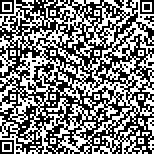| 本文已被:浏览次 下载次 |

码上扫一扫! |
|
|
|
| Matrix-conducting resistivity model for clean sands based on connectivity conductance theory and HB equation |
|
SONG Yanjie1,2, LI Xiaojiao1, TANG Xiaomin1,2, FU Jian1
|
|
(1.College of Geoscience, Northeast Petroleum University, Daqing 163318, China;2.Accumulation and Development of Unconventional Oil and Gas, State Key Laboratory Cultivation Base Jointly-constructed by Heilongjiang Province and Ministry of Science and Technology, Daqing 163318, China)
|
| Abstract: |
| Most of the commonly used resistivity models are unable to give a precise description of conductive laws of sands whose rock matrix contains a certain amount of pyrite, therefore it is necessary to study the conductive laws and to propose a matrix-conducting resistivity model. The effects of water resistivity and conductive matrix grain content in matrix-conducting clean sands are first analyzed by using laboratory resistivity measurements of artificial and field samples, in which the rock matrix is composed partially or entirely of conductive grains. The results shown in a log-log graph suggest nonlinear relationships between formation resistivity factor and porosity, and between formation resistivity index and water saturation, respectively. Values of the formation resistivity factor and the index decrease with decreasing water conductivity, or increasing conductive matrix grain content. Second, based on the compositions of matrix-conducting clean sands and the characteristics of connectivity conductance theory, matrix-conducting clean sands are divided into non-conducting matrix phase, conductive matrix phase and free fluid phase. Since the connectivity conductance equation applies to only one conducting composition and one non-conducting composition, while the HB equation can describe systems of two conducting compositions, a new matrix-conducting resistivity model for clean sands is proposed combining the connectivity conductance theory and the HB equation. The results show that the theoretical relationships between formation resistivity factor and porosity, and between formation resistivity index and water saturation predicted by the proposed model are consistent with the experimental values, and the proposed model is in compliance with meaningful physical bounds. The matrix-conducting resistivity model for clean sands can describe the conductive law of matrix-conducting clean sands, in which rock matrix is composed entirely or partially of conductive grains. The proposed model can be applied to quantitatively calculate saturation in matrix-conducting low resistivity reservoirs. |
| Key words: clean sand pyrite connectivity conductance theory HB equation resistivity model |
|
|